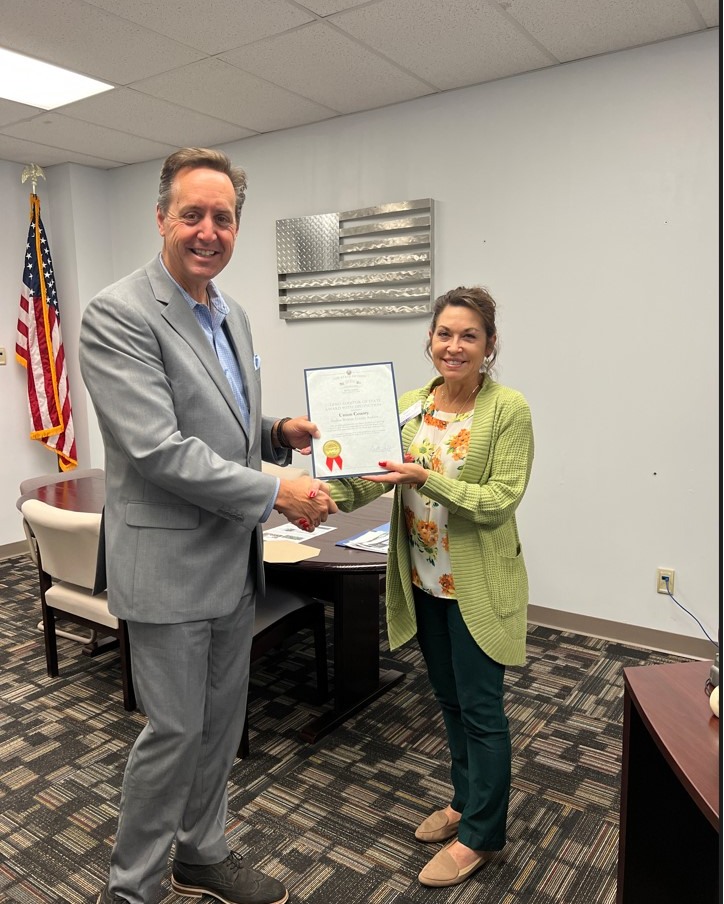
The Accurate Assessment
January 2025
by the Honorable Andrea Weaver, Union County Auditor
More TIF Clarity-The reality of Claw backs
Episode 2
Last month I brought to the gentle reader facts and misconceptions regarding real estate tax exemptions, focusing on TIFs. Before I move on to another relevant subject, I feel compelled to share a bit more information about the hard reality of TIF implementation.
Recall that Tax Increment Financing, TIFs, are a widely used economic development tool that allows for payment of public infrastructure by diverting property tax revenue to a special fund. This fund pays for those costs, allowing for them to be spread out over a large development area and usually over an extended period of time.
But how do TIFs happen? How are they created and are there “Best Practices” for creating them? I would argue that there should be!
Here are the steps that the creating authority must follow:
- Create the TIF with legislation.
- Given the open meeting requirements for public entities in Ohio, typically the content of the creation legislation takes a fair amount of time to develop. There are many pieces and parts to be considered, such as (but not limited to):
- The geographic area – maps, parcel #s, total acres, etc.
- Purpose – there are different kinds of TIFs – Project TIFs, usually for a blighted area; Incentive District TIFs and more, and all have their own set of Ohio laws governing them.
- Duration, and if more than 10 years, the impacted school district(s) must be included.
- Level of improvement to be TIF’d.
- Form 24 requires a variety of things from the TIF Administrator, not the least of which is copies of that above-named legislation and the completion of a questionnaire. There is a place for my acknowledgment of the application as well as a place for the county treasurer to attest to the current tax payment status of included parcels. Once this is completed, my office sends the form to DTE for their approval.
Note, that at this point, there is no TIF. It legally does NOT exist. It doesn’t become real and enforceable
if/when/until the Ohio Department of Taxation approves it.
This is where the difficulty begins. For reasons I can’t figure out and would love to have someone explain to me, the TIF creators and/or the project developers seem to not want to complete this required paperwork in a timely fashion. They delay in completing the DTE24 form – for months and sometimes years. For one TIF in Union County, I made a nuisance of myself by frequently checking in with the fiscal officer of the TIF Administrator to learn when the DTE 24 was going to be filed. But the property improvements were completed, and folks were living in them before the DTE24 was filed and then finally approved by DTE. DTE has some really smart people that work there, but they have a lot of these approval duties and take their approvals/denials very seriously. So they take their time. Which means it’s often 12-36 months before
we receive their Final Determination (FD) for a given project. So what does that mean? For the above, I had
to “claw back” 3 years of legally-distributed tax revenue from all of those local agencies and schools. It was terrible for them.
Here’s a hypothetical example – in 2021, a local village creates a TIF for Project A. Construction begins. For the next 2-3 years, property taxes are paid and distributed per the enforce levies. Public service agencies such as 911, UCBDD, Mental Health, Health department, school district, etc. – all receive their correct share of the paid taxes, based on the effective tax rate. This is right and true.
The Final Determination finally comes in 2024, after a delay (by either the Village or developer) in filing the DTE24 & a long delay in getting the FD from DTE. Most often DTE views the creation legislation and approves the FD back to when that legislation was executed. So that means the TIF has now been legally “created”, and it requires funding back to that date in 2021. What happens next? The very next calendar year, I am required by Ohio law to REMOVE from all of those public service agencies and schools the monies I had sent to them for the previous 3 years – and put that money into the now-existing TIF fund. It’s called clawing back those tax revenues. Frankly, (my personal opinion) I think this is terrible! All of those agencies legally received those tax revenues and utilized them per their missions. When I have to claw back, they essentially have to give up monies from their current budgets so that the TIF can be funded. The very public entities that are serving the citizens that this fictional Village and its developer claim to want to benefit, are deeply impacted by being forced to give up current year budgeted income. And it’s rarely something they can plan for because I don’t know about any DTE approvals until I actually receive them.
Final comments on this subject – while TIFs and other exemptions certainly have economic development merit – I firmly believe that every tool should be used well. Delaying the filing of the DTE24 form does NOT demonstrate the careful and purposeful use of these tools.
I would encourage the gentle reader to make your feelings known to the local governments that employ economic development incentives such as these, encouraging them to promptly file the required forms. If I had my way, they should be required to file the DTE 24 form with my office the day after they create their TIF legislation. We would promptly complete our parts and send it off to DTE. Then maybe, when DTE finally issues their Final Determination, the timing of the project completion and the diverting of the taxes would happen about the same time – NO Claw back.
There is a lot more than can be discussed about these and other programs. Look for Episode 3 in the weeks to come.
Andrea L. Weaver, MBA, AAS
Union County Auditor
937-645-3003 * www.unioncountyohio.gov * aweaver@unioncountyohio.gov
 An official State of Ohio government website.
Here's how you know
An official State of Ohio government website.
Here's how you know




